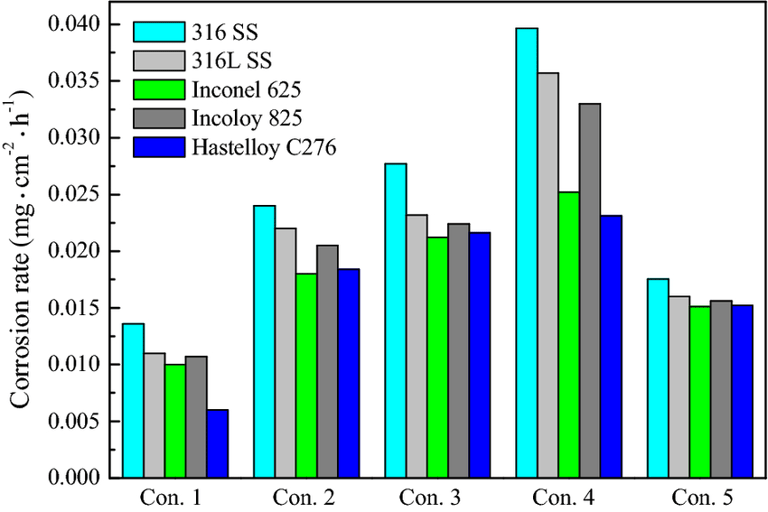
Hastelloy Alloys: Composition, Properties & Industrial Use
Hastelloy is a family of nickel-based corrosion-resistant alloys developed by Haynes International. Known for their durability in aggressive chemical environments, Hastelloy grades like C-276 and C-22 are widely used in chemical processing, marine, and aerospace industries.
🧬 Composition
Hastelloy alloys are primarily nickel-based with varying amounts of:
• Molybdenum (Mo): Enhances resistance to reducing agents and pitting
• Iron (Fe): Imparts strength and helps balance alloying costs
• Chromium (Cr): Provides resistance to oxidizing agents
• Cobalt and Tungsten (optional): Boost mechanical integrity in high-temperature applications
• Carbon: Carefully controlled to minimize carbide precipitation and grain boundary attack
Common Grades
Grade Composition Highlights Specialty Use
C-276 Ni-Mo-Cr-Fe Excellent resistance to strong oxidizers & acids
C-22 Ni-Cr-Mo-Fe Versatile alloy with improved pitting resistance
B-2 Ni-Mo Ideal for reducing environments
💎 Material Properties
Hastelloy alloys exhibit:
• Superior Corrosion Resistance: Effective against both oxidizing and reducing agents
• High Mechanical Strength: Maintains integrity under thermal and pressure stress
• Non-Magnetic Structure: Suitable for sensitive applications
• Excellent Weldability: Minimal heat-affected zone cracking
• Resistance to Stress Corrosion Cracking: Especially valuable in high-chloride environments
🏭 Industrial Applications
Hastelloy is a go-to material in:
• Chemical Processing: Reactors, vessels, scrubbers, and piping systems
• Pharmaceuticals: Equipment requiring extreme purity and chemical compatibility
• Desulfurization Systems: Handling sulfuric and nitric acid
• Waste Treatment & Incineration: Resists acidic condensates and oxidizers
• Marine & Aerospace: High resistance to salt water and atmospheric corrosion
• Semiconductor Fabrication: In environments with aggressive etchants
👍 Benefits
• Longevity: Extends equipment life under corrosive conditions
• Process Integrity: Minimal contamination or interaction with process media
• Versatility: Performs across a wide pH spectrum and temperature range
• Reduced Maintenance Costs: Fewer replacements and repairs
• Strong Return on Investment: Suitable for mission-critical operations
👎 Constraints
• Higher Material Cost: Premium alloy compared to stainless steel
• Density: Heavier than most steel grades, affecting system load calculations
• Machinability: Requires specialized tools and techniques
• Limited Availability in Large Dimensions: Custom fabrication may be required
⚠️ Operational Precautions
To ensure optimal performance and longevity:
• Avoid Halogen Exposure: Hastelloy C-276, for instance, may show vulnerability in wet chlorine
• Thermal Management: Avoid sudden temperature spikes to reduce stress cracking risks
• Inspection Protocols: Regular non-destructive testing for pitting or localized corrosion
• Proper Storage: Keep components dry and segregated from reactive metals
🧠 Conclusion
Hastelloy alloys represent a premium choice for engineers and technical professionals managing highly corrosive and demanding industrial environments. Their unique chemical and mechanical properties bridge the gap between performance and durability. While they come with cost and fabrication considerations, the payoff in safety, longevity, and process quality makes Hastelloy indispensable in cutting-edge chemical engineering applications.


The corrosion behaviors of 316 stainless steel (SS), 316L SS, Inconel 625, Incoloy 825 and Hastelloy C276 were studied in supercritical water (SCW) containing phosphate, sulfate, chloride and/or oxygen. (Z. Ma., et al., Oxidation of Metals (2018) 90:599–616 https://doi.org/10.1007/s11085-018-9855-4
Equipodia supplies Hastelloy process equipment. Explore our product range or contact us today to discuss your specific needs.
Equipodia Process Equipment UK Ltd
Customer Services
contact@equipodia.co.uk
+44-191 390 2300
© 2025 Equipodia. All rights reserved.
Quality chemical process equipment.
Registered in England No 16609310
Registered Address: 128 City Road, London EC1V 2NX, UK
